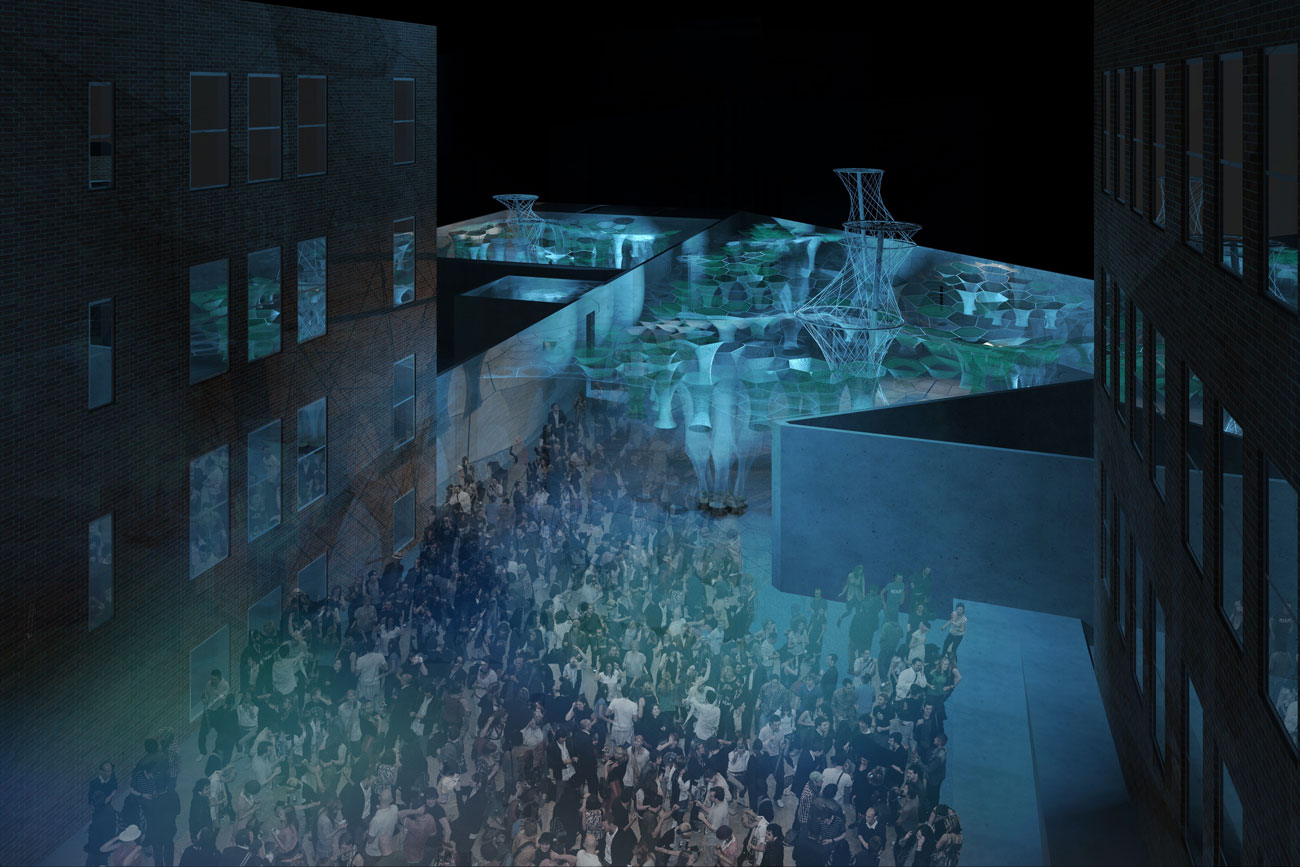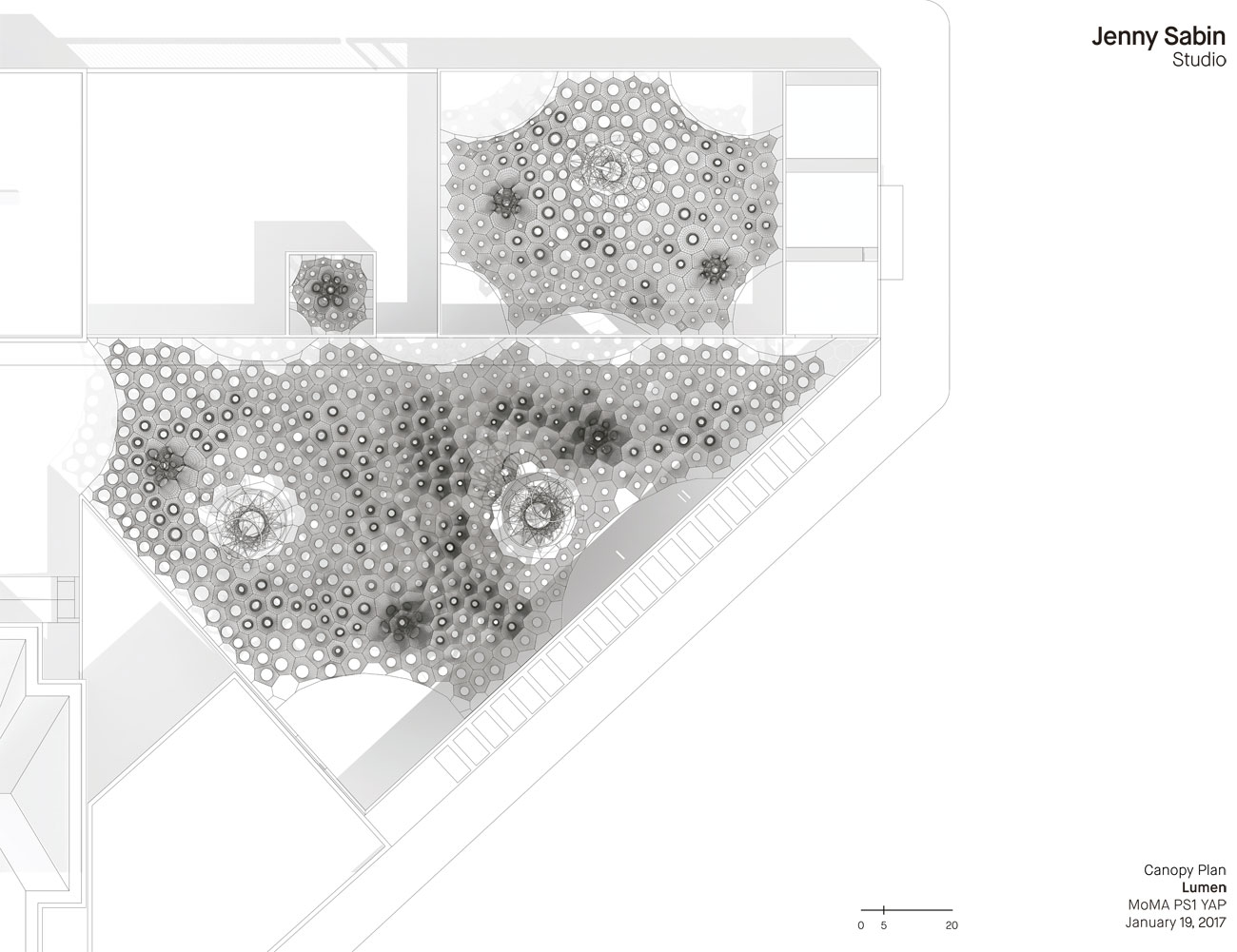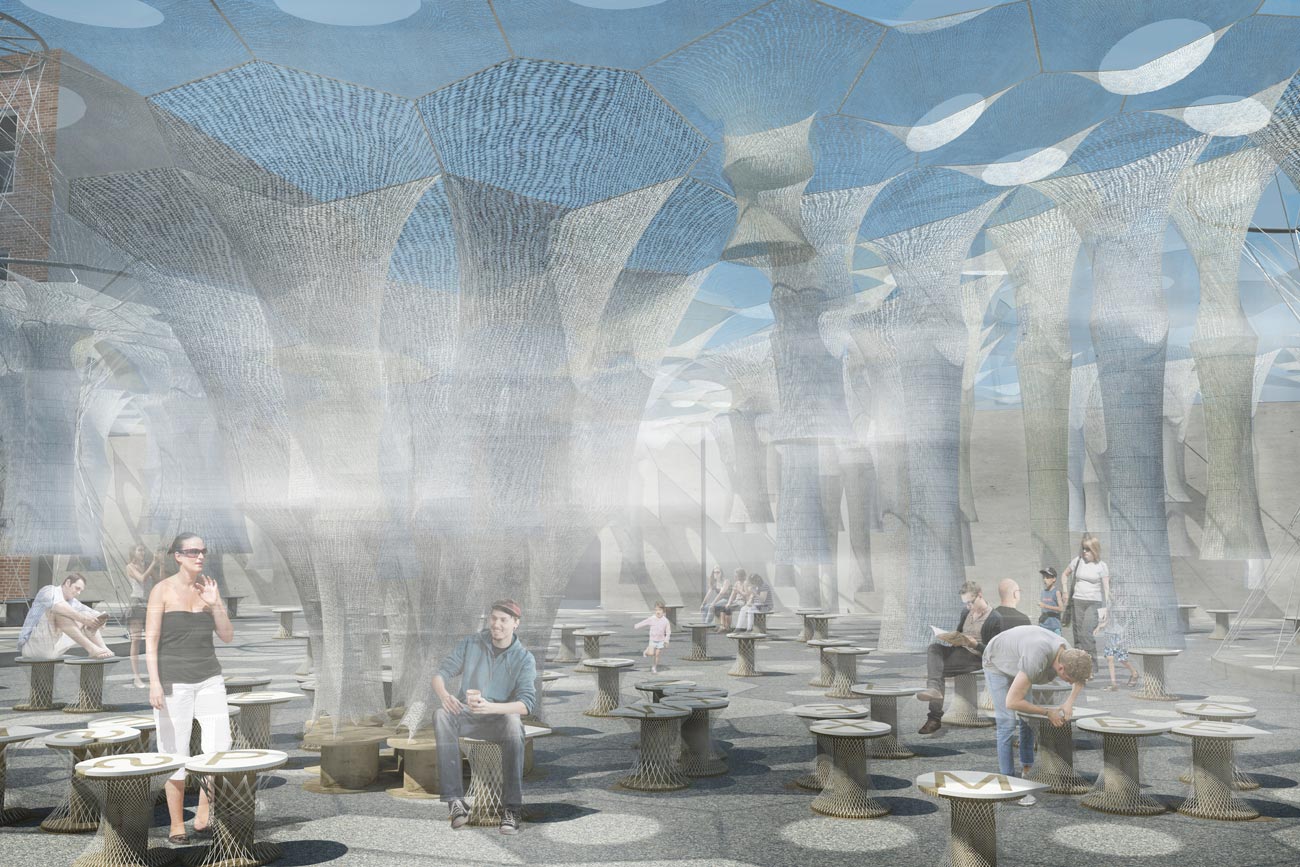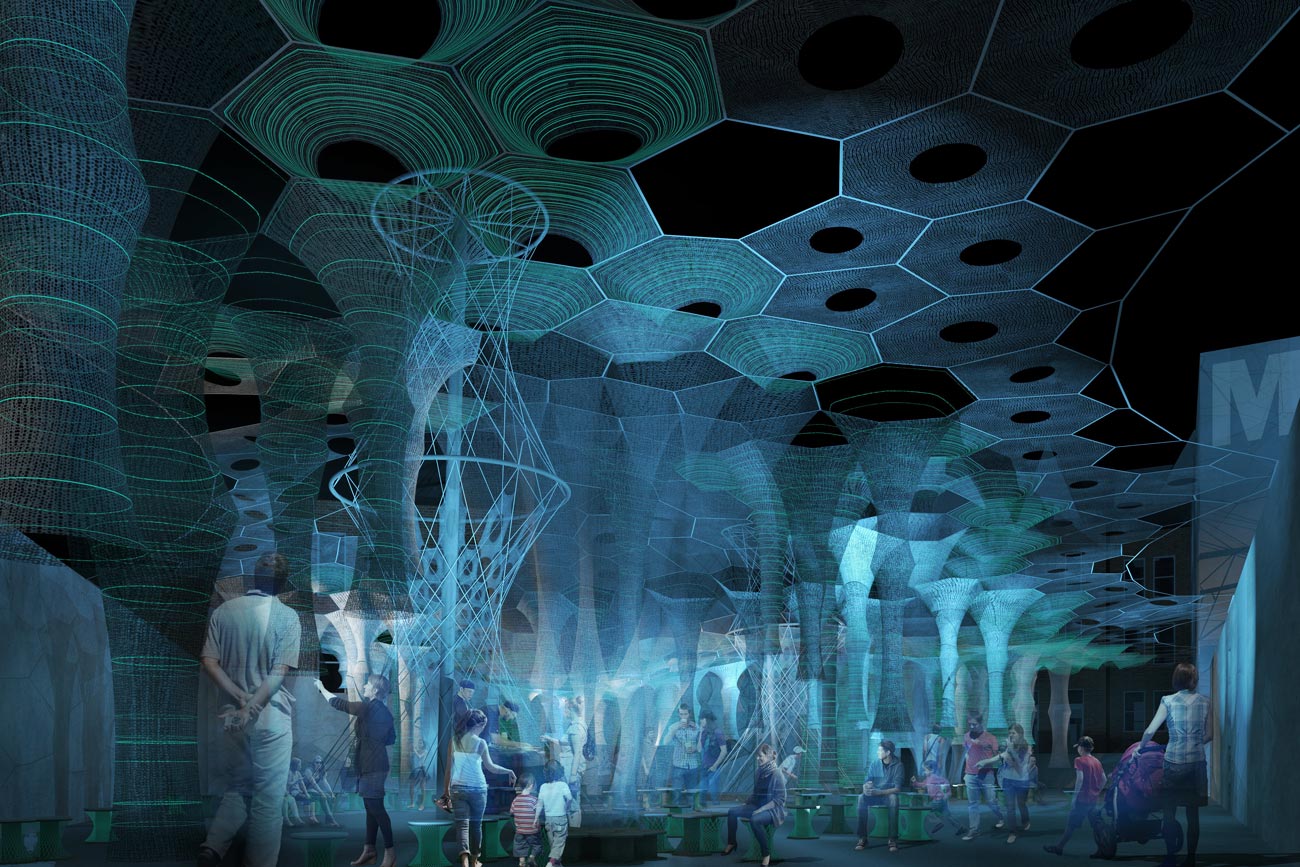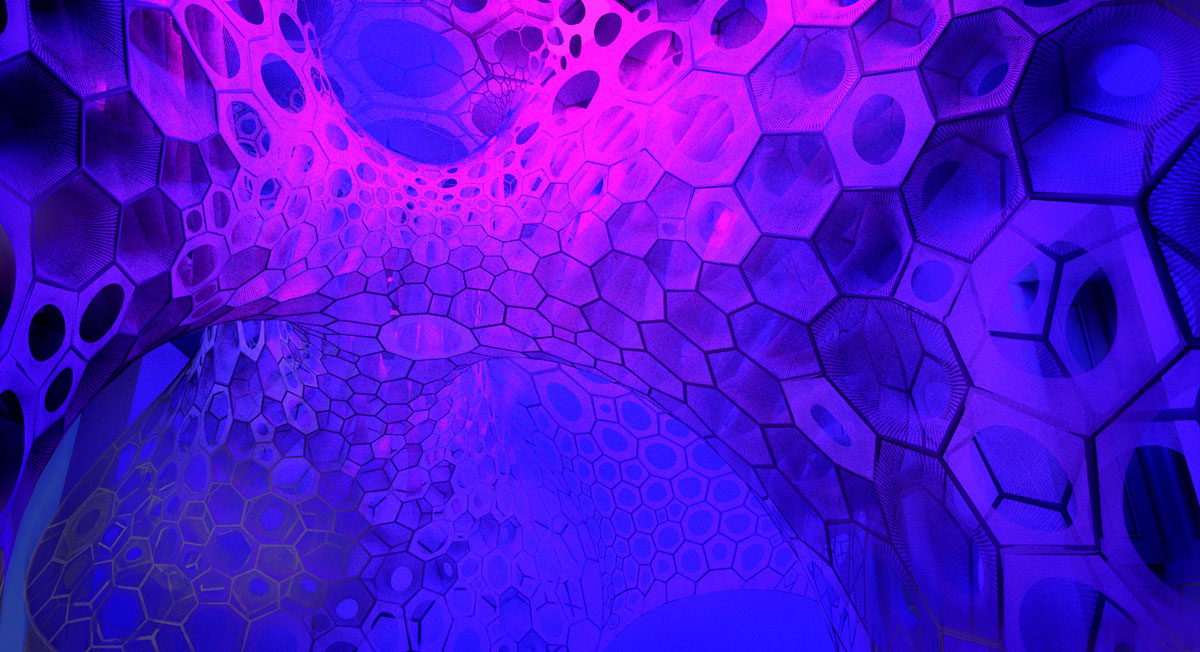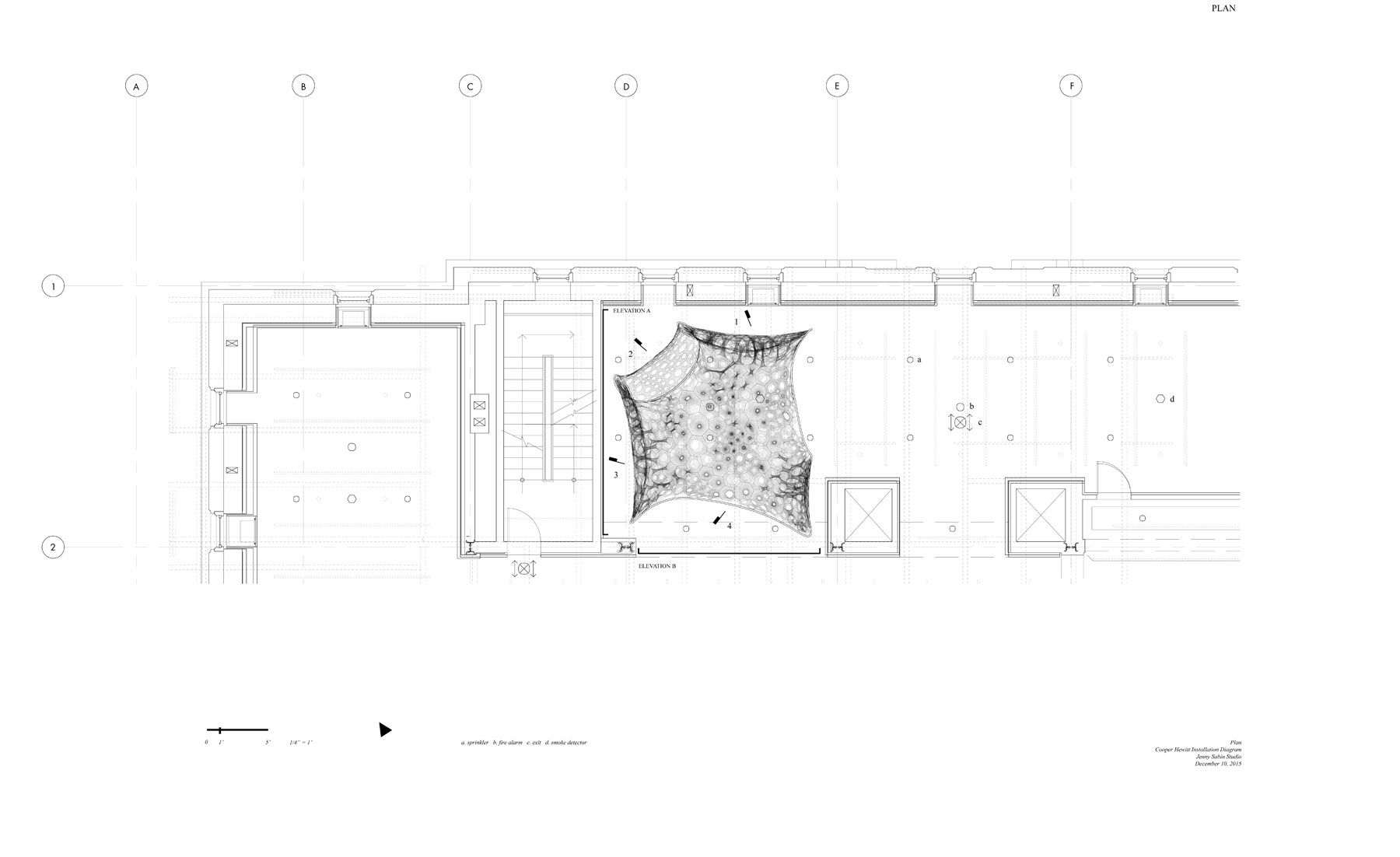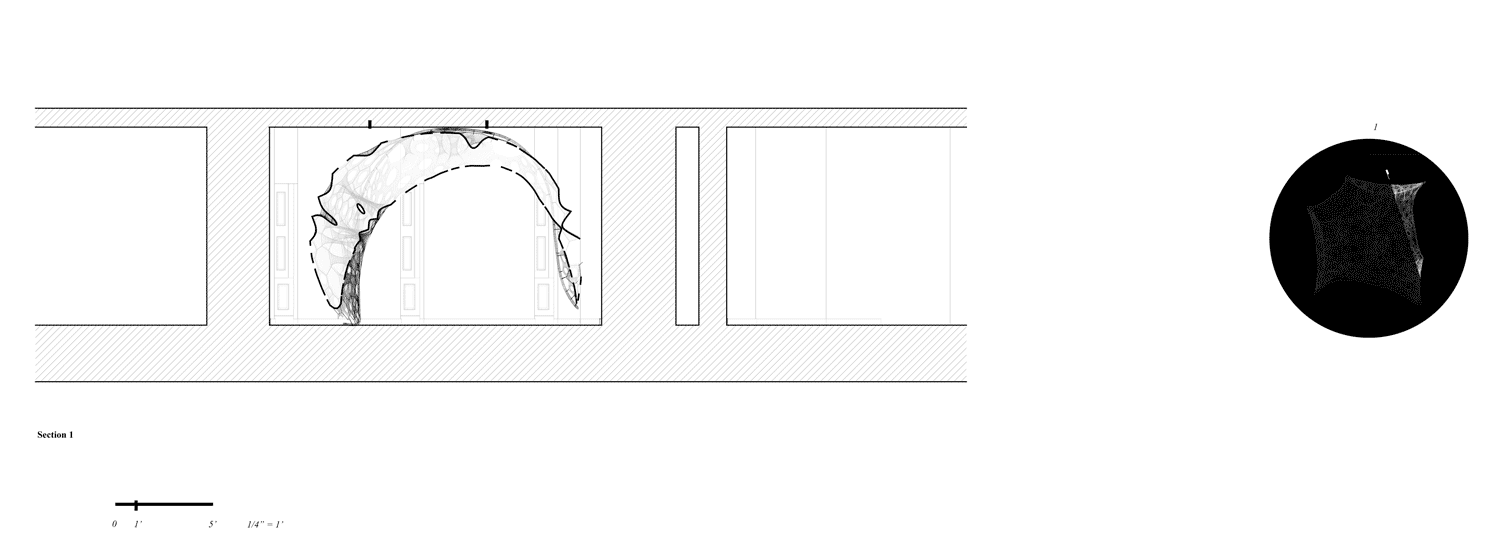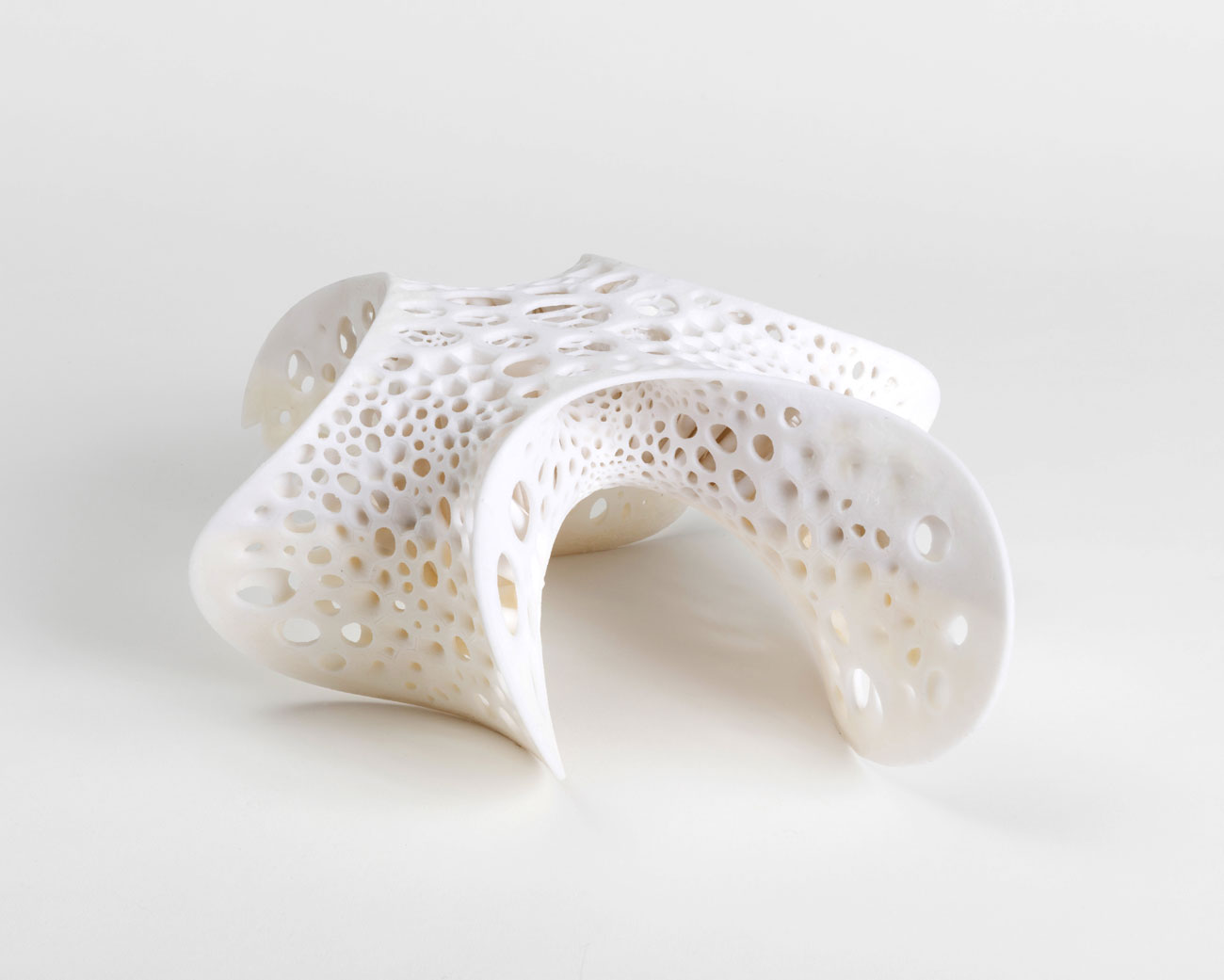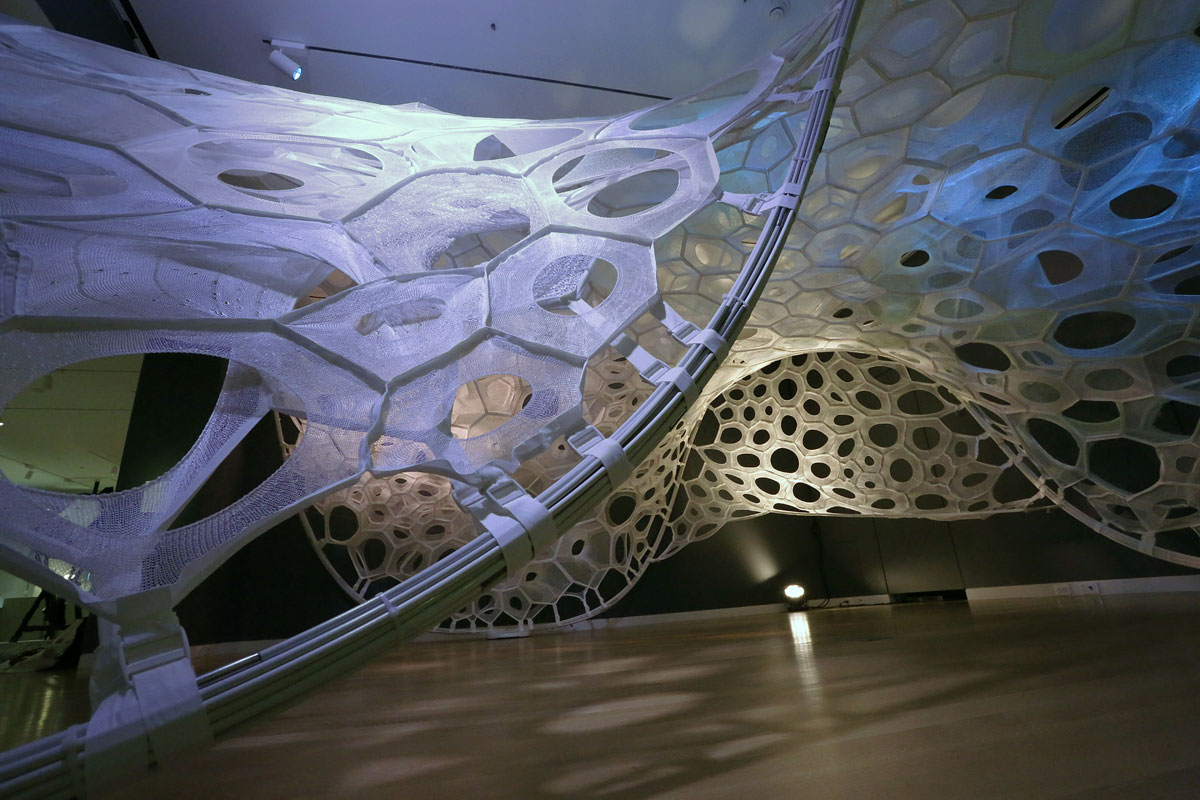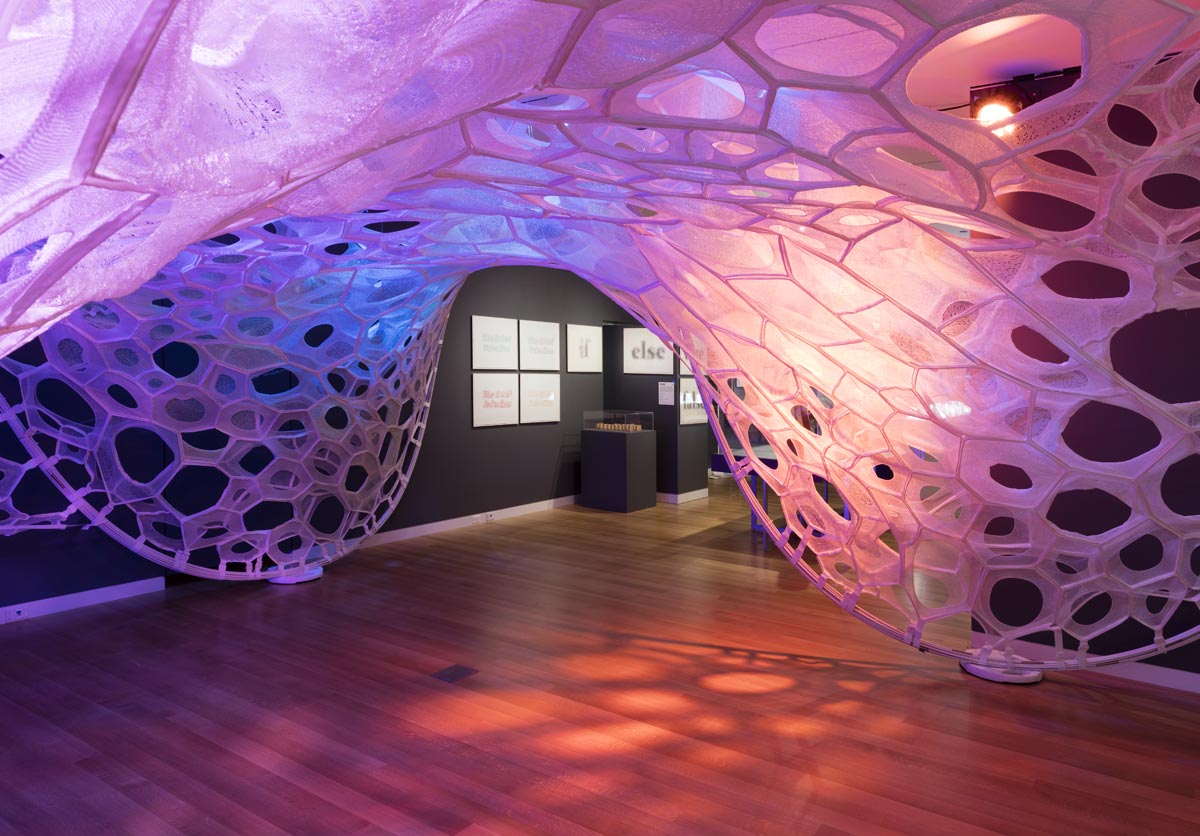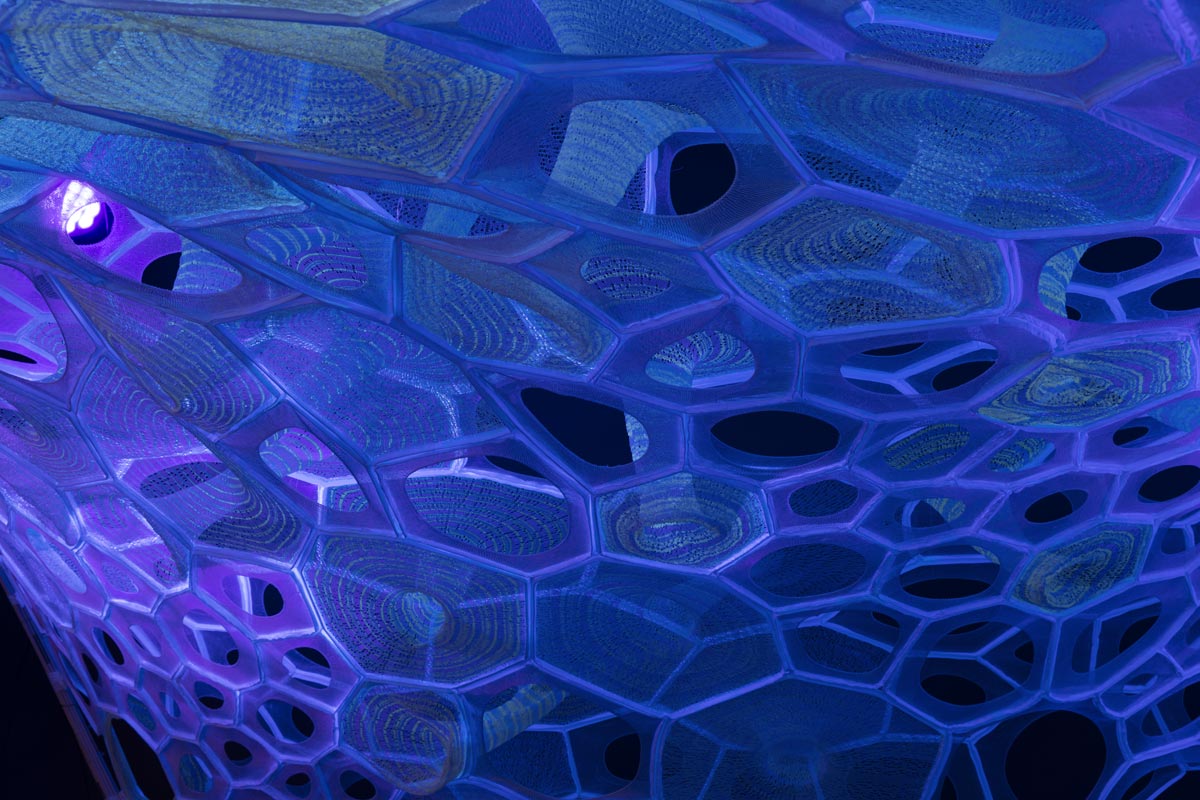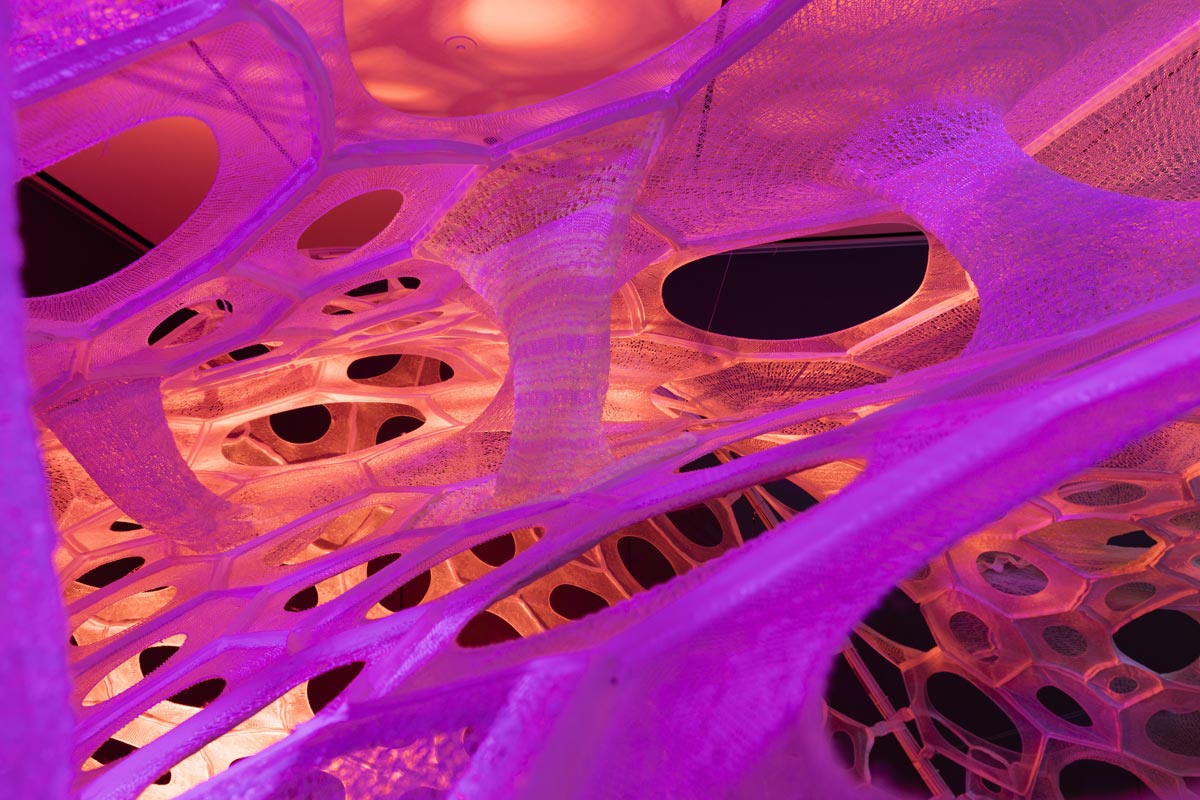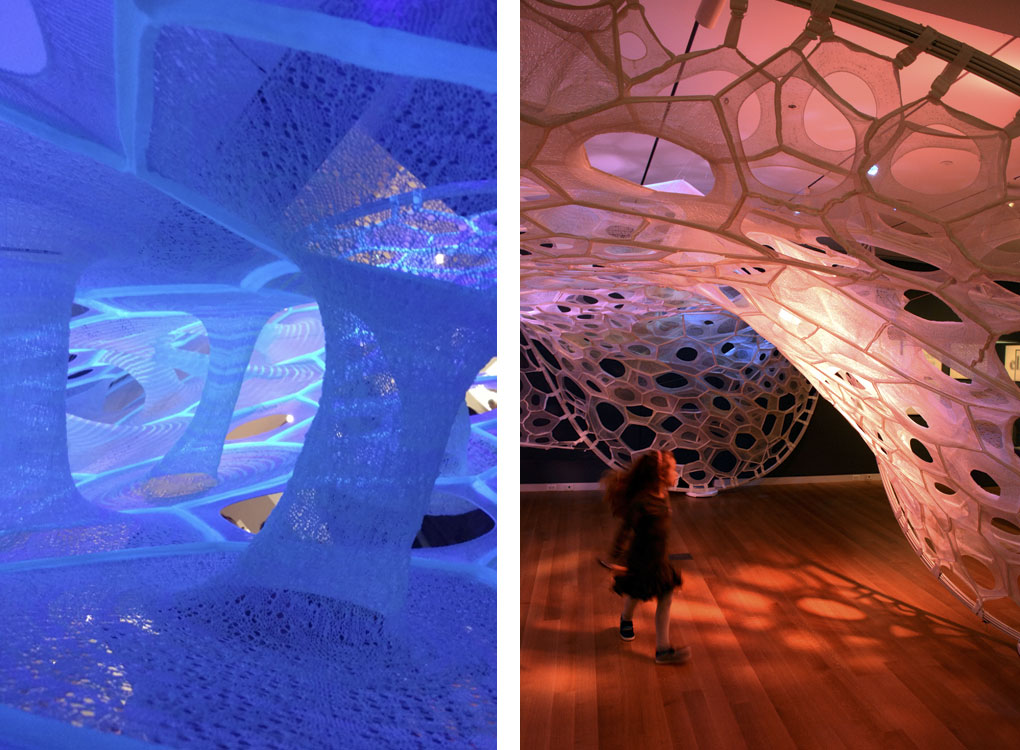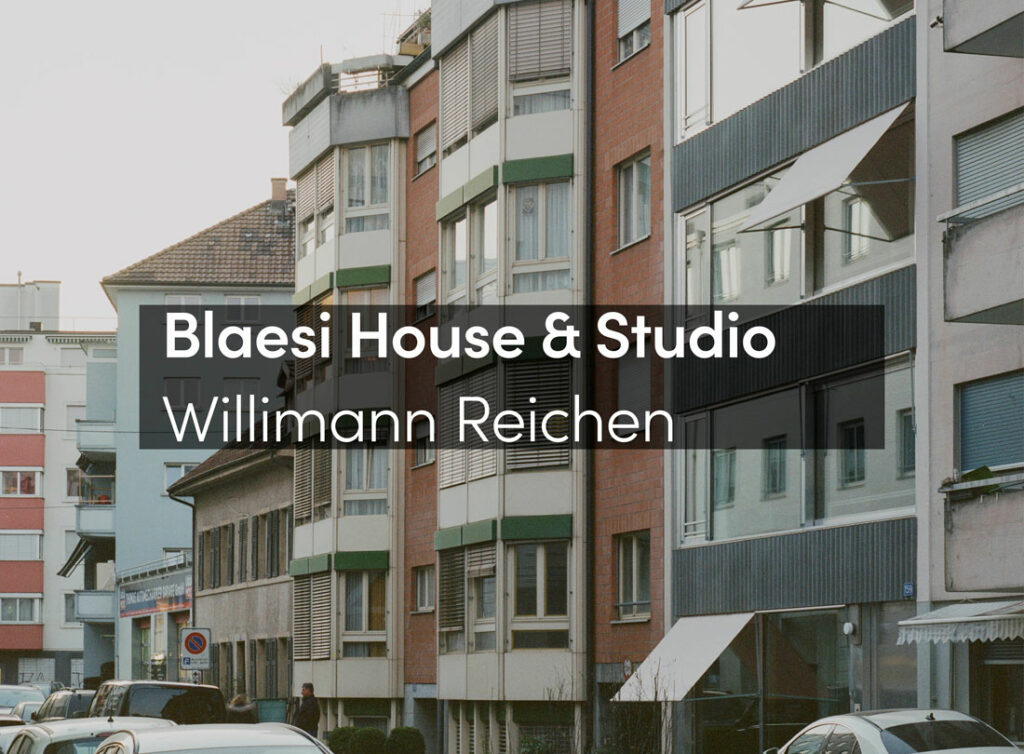Jenny Sabin Studio investigates the intersections of architecture and science, and applies insights and theories from biology and mathematics to the design, fabrication, and production of material structures and spatial interventions.
The studio collaborated with scientists and engineers, institutions and student laboratories to create these two textile structures, applied to temporary installations.
Lumen
By night, Lumen is knitted light, bathing visitors in a responsive glow of photo-luminescence; by day, Lumen offers succor from the summer heat, immersing participants in delicious ground clouds of cooling mist. Lumen is a socially and environmentally responsive structure that adapts to the densities of bodies, heat, and sunlight. A lightweight knitted fabric of responsive tubular structures and a canopy of cellular components employs recycled textiles, photo-luminescent and solar active yarns that absorb, collect, and deliver light. This environment offers spaces of respite, exchange, and engagement as a misting system responds to visitors’ proximity, activating fabric stalactites that produce a refreshing micro-climate. Families of robotically woven recycled spool chairs reveal informal messages and conversations through hydro-chromic materials. It is an open responsive system featuring digitally knitted and robotically woven lightweight, high-performing, formfitting, and adaptive materials. Lumen is a feminine form that offers luminous interiorities, informal networks, social fabrics, and fibrous assemblages that are pliable, transformative, and playful.
Lumen is an experiment, taking risks through collaboration across disciplines. Held in tension within the PS1 courtyard matrix of walls, Lumen applies insights and theories from biology, materials science, mathematics, and engineering. Material responses to sunlight as well as physical participation are integral parts of our exploratory approach to new materials, embodiment, and a transformative, adaptive architecture. The project is mathematically generated through form-finding simulations informed by the sun, site, materials, program, and the structural morphology of knitted cellular components. Resisting a biomimetic approach, Lumen employs an analogic design process where complex material behavior and processes are integrated with personal engagement and diverse programs. Through direct references to the flexibility and sensitivity of the human body, Lumen integrates adaptive materials and architecture where code, pattern, human interaction, environment, geometry and matter operate together as a conceptual design space. Knitting and textile fabrication offer a fruitful material ground for exploring these nonstandard fibrous potentials. As with cell networks, materials find their own form where the flow of tension forces through both geometry and matter serve as active design parameters. Lumen undertakes rigorous interdisciplinary experimentation to produce a multisensory environment that is full of delight, inspiring collective levity, play, and interaction as the structure and materials transform throughout the day and night.
PolyThread
Mathematically generated through form-finding simulations and inspired by the structural morphology of cellular networks, the PolyThread installation is a freestanding inhabitable form featuring knitted lightweight, high-performing, formfitting and adaptive materials structured and held in tension with integrated fiberglass tubing. This knitted textile structure employs photoluminescent and solar active yarns that absorb, collect, and deliver light. Portable and lightweight, such a structure could be used outdoors to absorb light from the sun during the day and release it at night. Material responses to sunlight as well as physical participation are integral parts of our exploratory approach to the subjects of beauty and adaptive architecture.
Jenny Sabin Studio | PolyThread.
Models borrowed from architects–such as tensegrity structures and geodesic domes–have led to radical new insights into how living systems, such as cells, tissues and whole organisms, are assembled and function, as well as to a new understanding of how the microecology of cells influences the genome. Similarly, models borrowed from biology, particularly regarding self-organization, metadata structures, and the emergence of complex, non-linear global systems from simple local rules of organization have led to radical new forms and structural organizations in architectural design. This project is a biosynthesis of over 11 years of rigorous investigation into matrix biology and the active morphologies of cell networks. Resisting a biomimetic approach, PolyThread employs an analogic design process where complex behavior and processes are integrated with material experiments. Knitting and textile fabrication offer a fruitful material ground for exploring these nonstandard fibrous assemblages. Working analogically and digitally, physical knit fabric prototypes and minimal surface relaxation models operate together as a materially directed generative design process. As with cell networks, materials find their own form where the flow of tension forces through both geometry and matter serve as active design parameters.
Plan
Sections
Generative Diagram
3D-printed Model
This project aims to engage a new material practice and next steps in digital fabrication in architecture through the production of models and prototypes via cutting-edge parametric and associative software that interface fabrication technologies in related, but alternative disciplines. Advancements in weaving, knitting and braiding technologies have brought to surface high-tech and high-performance composite fabrics. These products have historically infiltrated the aerospace, automobile, sports and marine industries, but architecture has not yet fully benefitted from these lightweight freeform surface structures. PolyThread features knitted textile structures at the scale of a small pavilion.
